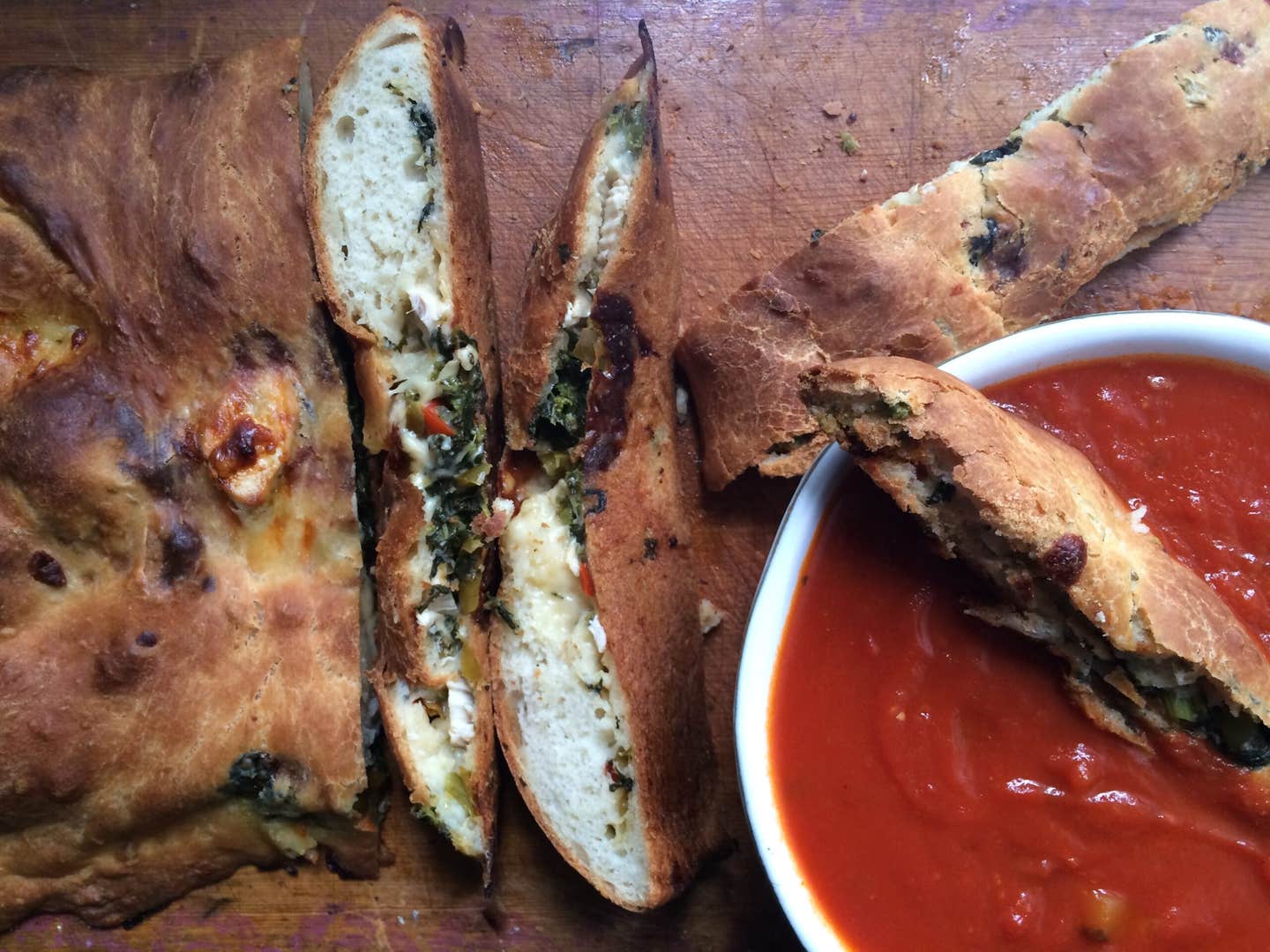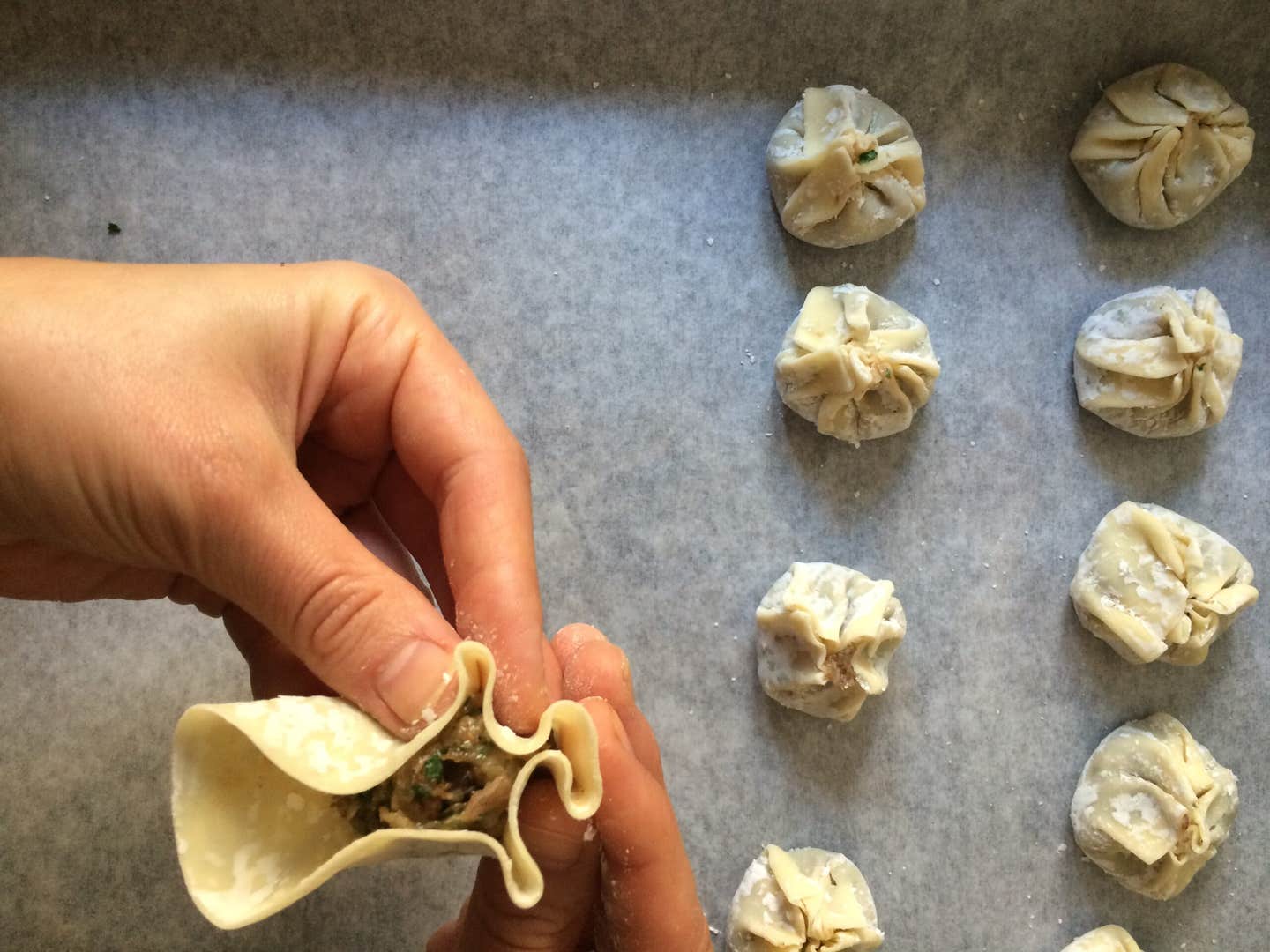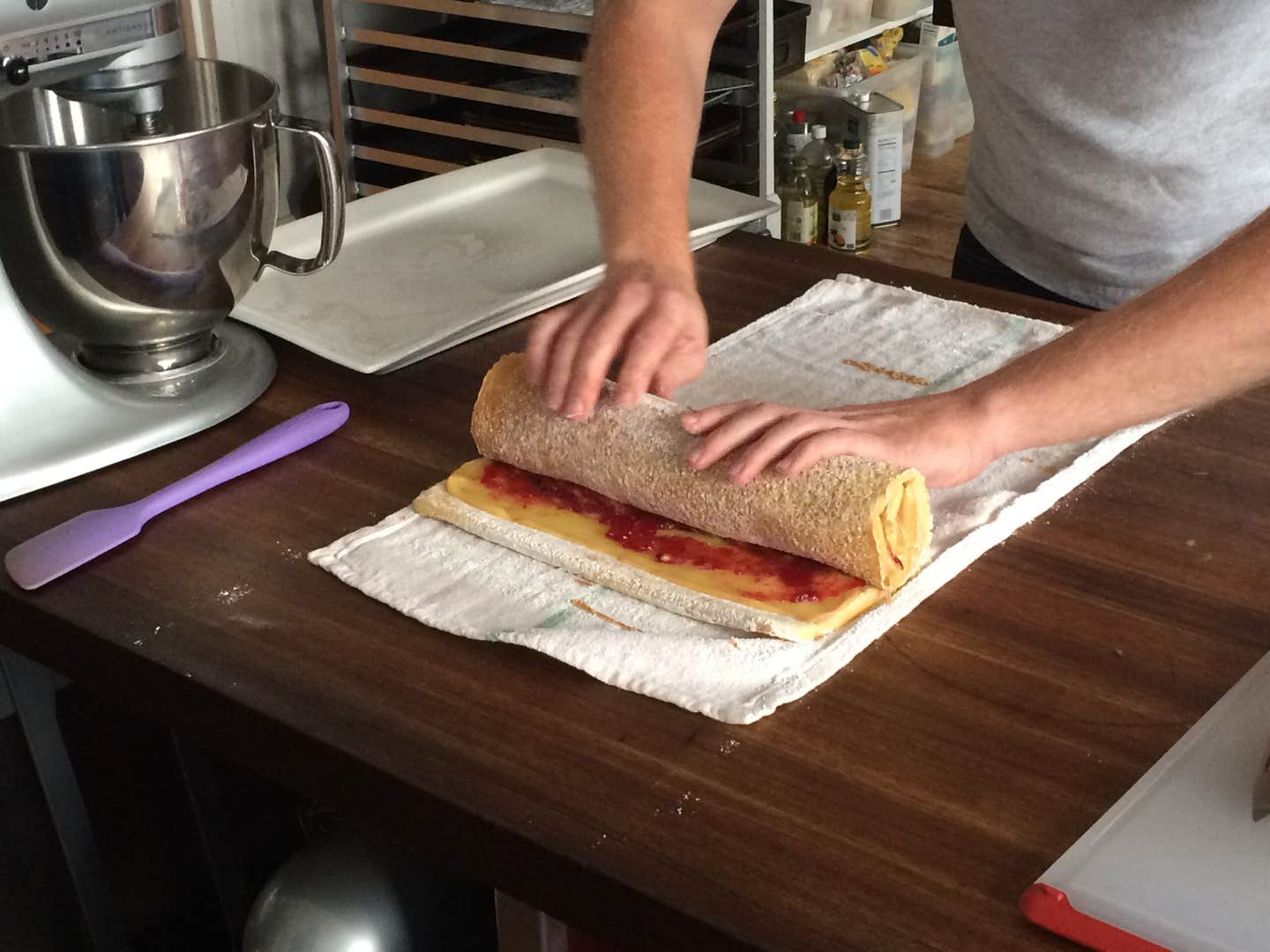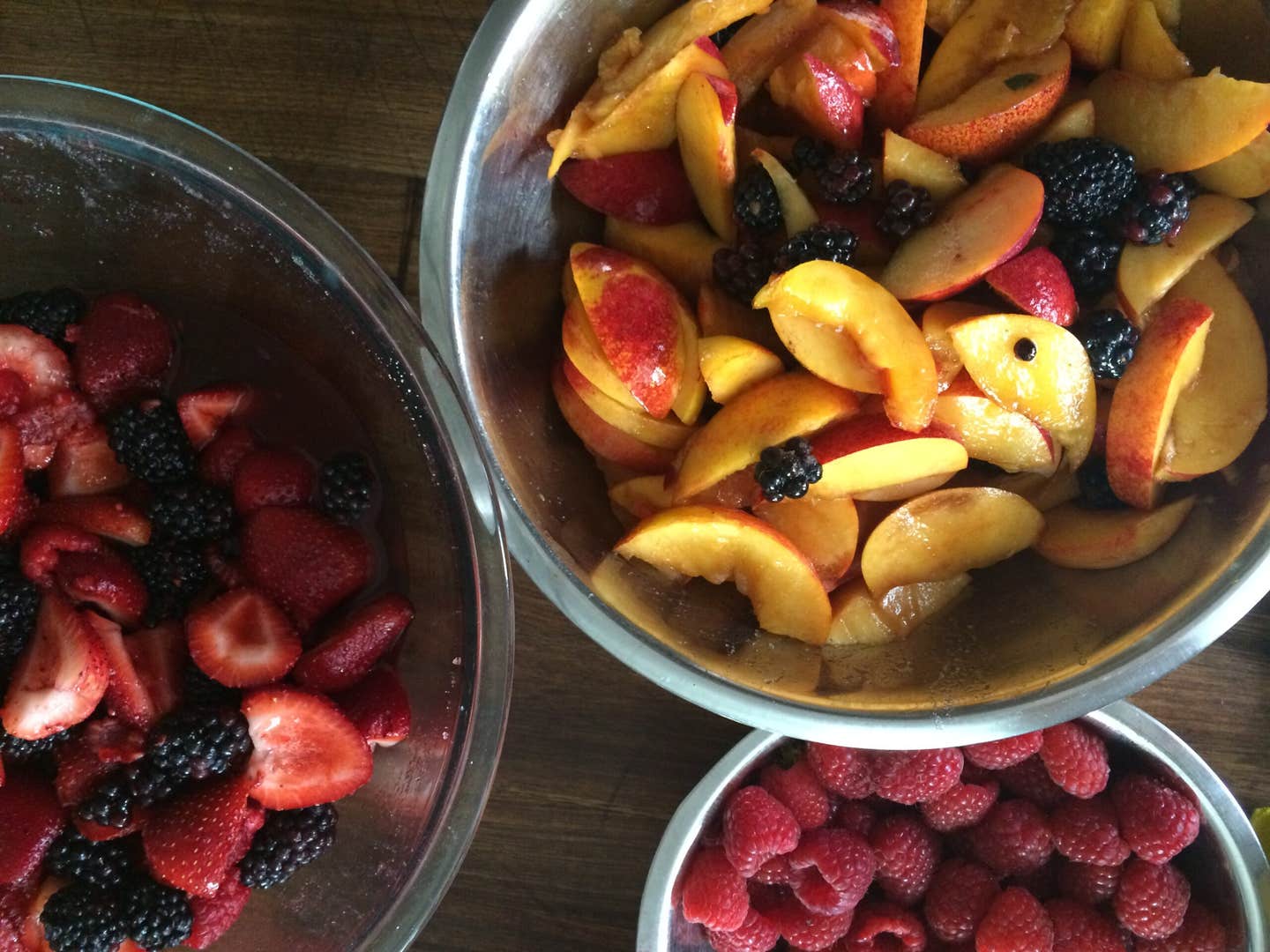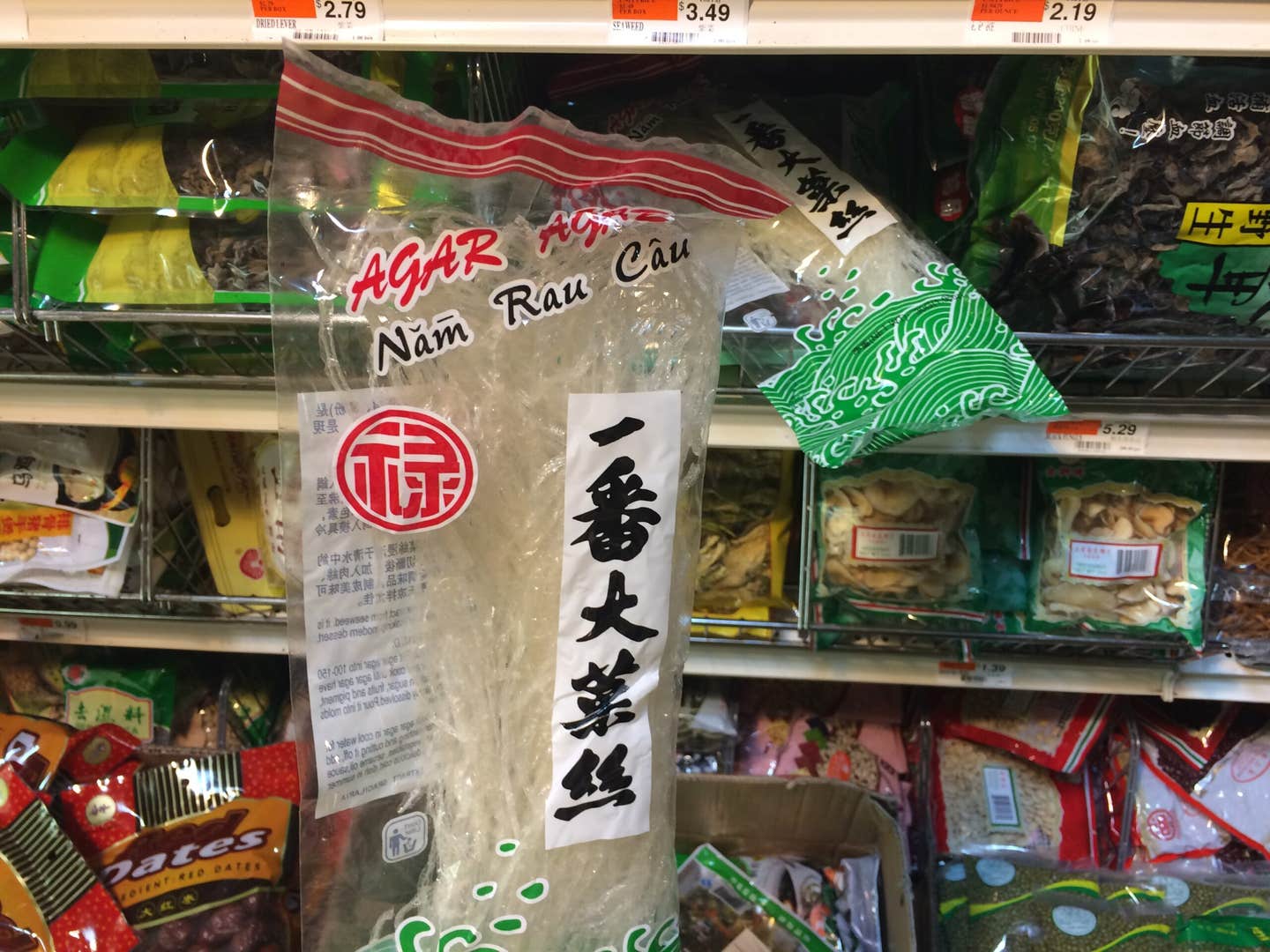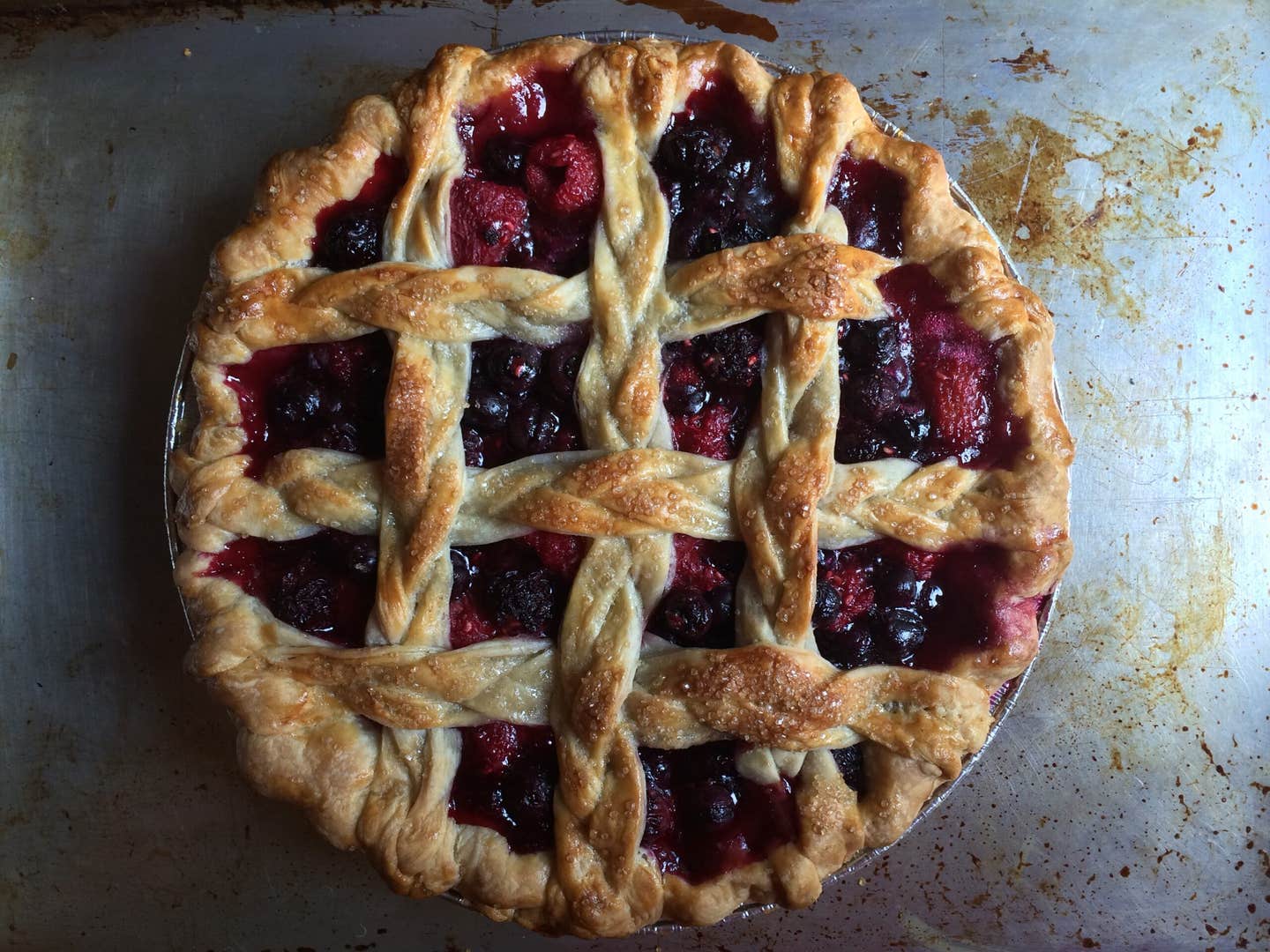
What We Learned This Week: July 13-17, 2015
How to braid pie crust, make dumplings, and find whole leaves of dried agar agar
Each week is a new culinary adventure in the SAVEUR Test Kitchen. From cooking tips and kitchen hacks to product discoveries and creative ingredient uses, here's where we share our biggest takeaways.
Proofing Dough
Whenever we have a photoshoot in the office, our kitchen team likes to make lunch for the whole crew; this Wednesday, we decided on stromboli. This perfect comfort food—an Italian turnover usually filled with cheese—ended up giving us a helpful lesson in making yeasted dough in the summer. While our recipe called for a proofing time of 1 ½ to 2 hours (until the dough doubles in size), it only took a little over an hour—thanks to a combination of summer humidity and a broken air conditioner. (It was hot in there.) Luckily for everyone, we caught the dough in time to prevent it from overproofing. If your dough proofs for too long, the yeast begins to die, resulting in flat, dense bread (not good for Stromboli). So if your kitchen is very hot, or very humid, make sure to check your yeasted dough early and often; it will likely double in size faster than your recipe predicted.
Braiding Pie Crust
I decided to give myself some homework this week after seeing Ben Mims, our food editor, braid pie crust for a Saveur Basics video (coming soon!). Since I already know how to braid challah and hair, I thought it would be a piece of cake. But, I found pie crust much more difficult, since it's so delicate. I learned that it's important to make sure you have well-chilled pie dough, so the strips of dough can be twisted without tearing. You also need to move quickly. If your dough becomes too soft, transfer it to the fridge for a few minutes to firm up. These braids work equally well along the rim of your pie plate or as the strands of a lattice top.
Making Dumplings
This week, deputy editor Yaran Noti popped his head into the test kitchen looking for a snack (or something to Instagram) and ended up receiving a lesson in making dumplings—we were testing a recipe for steamed dumplings made from wonton wrappers and a spicy turkey filling. The first trick to dumpling success is having the right amount of filling: We find that 2 teaspoons work well for round wonton wrappers, as it makes for a plump dumpling that you can still seal closed. We then had Yaran brush water around the edge of the wrapper before sealing; the water mixes with the flour on the surface to make a starchy, glue-like substance that seals the dumpling. He ended up getting a snack, an Instagram, and a cooking lesson all in one.
Making a Roulade
Ben taught us how to make a roulade this week, giving tricks for how to have a perfect cake roll every time. When your sheet cake is done, let it cool slightly for 5 minutes. Meanwhile spread out a kitchen towel, the size of the pan, and dust heavily with powdered sugar. Invert the cake on to the towel and roll it lengthwise, rolling the towel in it. Now let the cake cool completely, which will make it easy to re-roll later on. Once completely cooled, unroll cake and spread an even layer of jam, custard, or whatever filling you desire. The cake should now be able to be easily rolled and iced. Keep an eye on Saveur.com for a video showing this technique!
Reducing Your Pie Filling
Chef Silvia Baldini came by the test kitchen to teach us a thing or two about making pie, one of our favorite summer treats. Unlike the typical cornstarch or flour thickening methods, Silvia uses a reduction of natural fruit juices. First, she macerates the fruit with sugar (1 tablespoon sugar per cup fruit) until it begins to release its juice. Then, she strains out the liquid and reduces it on the stove to a thick syrup. By tossing the syrup with the fruit, you achieve the same thickened pie filling, while also concentrating the natural fruit flavors.
Finding Agar Agar
Some may know of this seaweed thickener in its powdered form, often used by chefs to thicken sauces or purees, but we needed whole leaves of dried agar agar this week for a seaweed salad. While it has become quite easy to find the powdered or flake forms, it was much harder to find it in its natural form, which we had never seen before. After looking in various stores in Chinatown, I finally snagged a few packages. These long, white strands, reconstituted in water, make a gelatinous product reminiscent of thick glass noodles. After marinating in a miso dressing, they were delicious served with rice and nori—you'll be able to find the recipe in our October issue.
Keep Reading
Continue to Next Story
